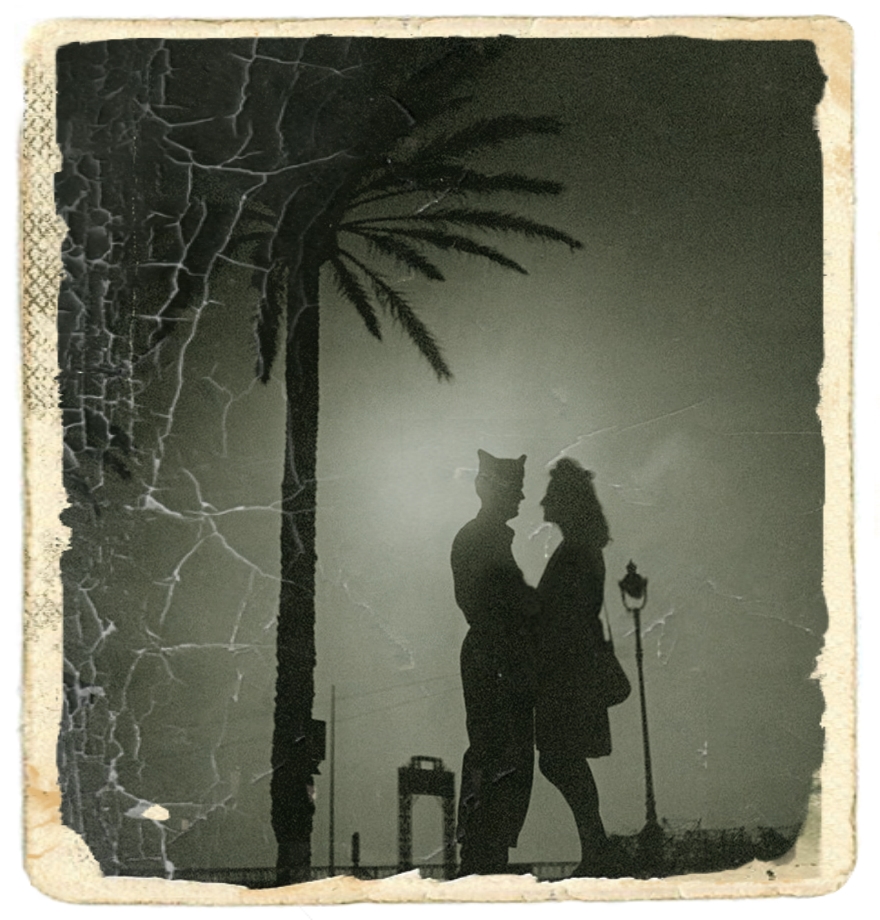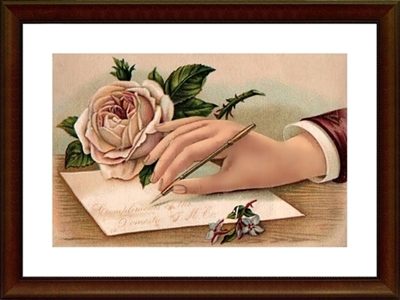
I have the unique privilege of meeting hospice patients for the purpose of writing their life story, so I’ve heard some pretty amazing tales! I’ve learned about lives well lived, about accomplishments and regrets, and about the way certain events can shape a person’s life forever. It’s been awhile since I last shared a hospice story, so here’s one about a woman who grew up in London during the bombing blitz of WWII. At 18, she became a war bride, but when I met her at the age of 90, she was quick to point out that’s not all she was!
She was born in London in 1928. Her father was a letterpress operator for a London newspaper, the Daily Herald, and her mother was a teacher at a school for girls. She was 12 years old when German warplanes began bombing the city every night for 57 consecutive nights in attacks that continued until May 1941. During the bombings her family took shelter in the basement of a nearby warehouse. She recalls how very loud it was, even underground, and how they tried to drown out the noise by singing and dancing to Glen Miller while bombs were being dropped above them. She remembers the strange color of the sky and the smell of smoke as they walked home each morning through the war-torn city. When the Blitz ended, much of London was destroyed or damaged and 375,000 citizens were left homeless.
She had two sisters and one brother. They, along with her parents, survived the bombings but their home did not. She was 15 before they found a permanent home, having moved from place to place for several years. The best part about having their own home again was being able to take a bath, but she remembers the day her mother drew a 5-inch line around the inside of the bath tub because that’s all the water they were allowed to use due to government restrictions. There were also rations on food, clothing and shoes. She, her sisters and her mother all shared the only five dresses they owned.
When she was 17, dancing was still a favorite pastime just as it had been in that warehouse basement, so one night her sisters snuck her into a dance hall where American GI’s often spent their free time and money. She met her future husband there, dancing the Jitterbug and drinking “bitters”. She soon found out that marrying her young soldier was not going to be easy. American servicemen were met with numerous obstacles if they wanted to marry while overseas. After finally being granted permission from his Commanding Officer (and her parents), they were married in 1946. They enjoyed a two-week honeymoon before he was sent to Paris. Once he knew when he could return to the States, he applied for her to be sent to America as a War Bride. She was summoned to the American Embassy in London for an interview, then put on a waiting list with thousands of other English brides.
Eleven months later, it was finally time to say goodbye to her family and her home. Until then, life in London was all she had ever known. It took over two weeks to sail from Southampton to New York. She remembers being impressed by the skyscrapers, never having seen such tall buildings before. She also remembers when she got off the ship there was no one to greet her. She was to have been met by her husband’s parents, but her ship, The S.S. Argentina, was several days late. She lived in Boston with her new in-laws, who were strangers to her, for three months while she waited for her husband to come home.
The American GI and his War Bride were married for 32 years and had three sons. He became a car salesman after his discharge from the Army and she was a cook in an elementary school for 14 years. They moved to the Mid-West and opened their own restaurant in 1968. Ten years later, he passed away. She sold the restaurant and opened a pastry shop in a small suburb where her pies and cakes were in high demand. The boys were busy and popular. Her two oldest sons graduated from college and the youngest one joined the Army, like his father.
She was diagnosed with kidney disease in 2015 and was placed on hospice services in 2017. I met her because her family wanted me to document her life story in a journal. They provided me with decades of photos, and I collected memories from her to include in the book. The first time she and I talked, I told her I heard she was a War Bride. “Well, I was more than that!” she said, so I decided not to talk about it further unless she brought it up. I let her tell me she was a wife, mother, grandmother and great-grandmother. She was an avid reader, a school board member, a devout Christian, and a bird watcher. She loved to travel, to cook and to watch old movies. She and her husband danced together for nearly 30 years. It didn’t take long, however, before she was telling me about the air-raids in London and what it was like to leave home all by herself. Was she brought to America as a War Bride? Yes, she was! But she was SO much more than that!
Here are more of my hospice stories, if you care to read them:
“I Don’t Know You,” she said . . .
“It’s Who I Was,” he said . . .
Photo credit: Bing search


What a lovely story! I thoroughly enjoyed reading it, and am looking forward to reading more. Thank you 😊
LikeLiked by 2 people
Thanks, Pat! I enjoy writing the stories people share with me. Life is a fascinating journey!
LikeLike
a beautiful story. Thanks for sharing that. She was definitely more than that!
LikeLiked by 1 person
She was delightful – and so loved by her family. Thanks for reading!
LikeLike
What a wonderful blessing you’ve been given….to hear and put into writing, these stories! And what a privilege. I’m looking forward to reading more!
LikeLiked by 2 people
Thank you! It’s a task filled with gratifying reward!
LikeLike
So lucky you are to capture these lives. We all are so much more than a cursory look would indicate.
LikeLiked by 1 person
I AM lucky! We are nothing if not complex, that’s for sure!
LikeLiked by 1 person
Beautiful story and what a treat to be able to hear such great stories and document them, I love hearing stories from my friend’s parents. Thank you for sharing.
LikeLiked by 2 people
Thanks. Their stories remind me that life is not perfect for any of us, but it is what you make it!
LikeLiked by 1 person
So interesting to look into people’s different lives. She must have been a very brave young lady to leave her family at a time when people didn’t just travel abroad. Thank you for sharing.
LikeLiked by 1 person
You’re so welcome! She was a special lady and I’m grateful for the chance to hear her story.
LikeLiked by 1 person
I very much enjoyed this. Thank you for sharing.
LikeLiked by 1 person
I’m so glad you enjoyed it! Thanks for commenting.
LikeLiked by 1 person
Oh my gosh! I could just visualize her entire life with your beautiful way of writing. To survive the war, the travel, the loss of her husband and build a new business and find the joy in dancing is amazing. It must be a joy to enter into “her” world and experience her life! I love the photo also – just WoW!
LikeLiked by 1 person
Thanks so much! I’m always touched when people’s lives are affected by events beyond their control.
LikeLike
That is a beautiful story. I could just imagine them jitterbugging.
LikeLiked by 1 person
Thank you so much. I appreciate your comment!
LikeLiked by 1 person
There is a wonderful song called The Bridal Train by an Australian band called The Waifs about Australian war brides all catching the train from Perth to Sydney to board a boat to travel to the US. Not sure if you can find it online, but it would be the perfect accompaniment to your fabulous story. Thanks for sharing, Mel
LikeLiked by 1 person
I’ll have to search for it – thanks for the tip!
LikeLiked by 1 person
There was also a derogatory saying about American soldiers in Australia during WWII, “overpaid, oversexed and over here”!! 🙂 Good luck to them! Mel
LikeLiked by 1 person
Ha! Yes, I’ve heard that saying before! Thanks for the comment, Mel!
LikeLiked by 1 person
Wow! What an amazing story and thank you so much for sharing!
LikeLiked by 1 person
My pleasure! She did have a quite a story!
LikeLiked by 1 person
Thank you so much for sharing this, Linda.
LikeLiked by 1 person
Thank you for taking the time to read it! I appreciate your comment.
LikeLiked by 1 person
My mother was the first war bride. Love the story.
LikeLiked by 1 person
Wow, really? I’ll bet she had quite a story! Thanks.
LikeLike
Yes. She crossed Australia during blackout then sailed on a cargo ship. Then took a train from the the north US to Florida. My dad was then flying a PBY for the Navy in the Caribbean.
LikeLike
A beautiful story, wonderfully told 😊
LikeLiked by 1 person
I appreciate that, Clive. Thank you!
LikeLiked by 1 person
Wonderful story and wonderful recording of the story.
LikeLiked by 1 person
So glad you enjoyed it, Jazz. Thank you!
LikeLiked by 1 person
What a wonderful way to remember loved ones! I love what you are doing with these stories! My mother-in law is in hospice now and she is an important part of the family biography that I’m writing for my girls.
LikeLiked by 1 person
Good for you! Ask lots of questions now while you can. Most people wait until it’s too late. Thanks so much for the lovely comment.
LikeLiked by 1 person
Wow. What a privilege and a responsibility to get it right! I took a course once, long ago, about doing oral histories, because that interested me…but then I didn’t make the opportunity happen to start that work. I’ve also thought I’d like to volunteer to write people’s obits, because I’ve always thought that they should be more than a list of survivors and dates, they should reflect the personality of the person. I wrote my father-in-law’s and my uncle’s, and my husband’s aunt’s. But what you’re doing is even better, to get written down for the family a person’s life story. Is there an organization that does this? Training? I’m intrigued. And thank you for doing this, I know it’s priceless for family members.
LikeLiked by 1 person
The hospice organization I volunteer for provides these life journals for their patients who want one. The families are always so appreciative; and the patients seem to enjoy a trip down memory lane at this stage of their life. Thanks so much for the comment and the follow!
LikeLike
Beautiful story. I am a health companion and have met and become friends with several people in their 90’s and indeed they are more than what you see before you. The stories are amazing and I feel privileged to be meeting such interesting people with so much to offer. 🙂
LikeLiked by 1 person
I’m so glad you find it a privilege to be with this generation of people! They are usually a wealth of knowledge and unique perspectives. Thank you for the comment!
LikeLike